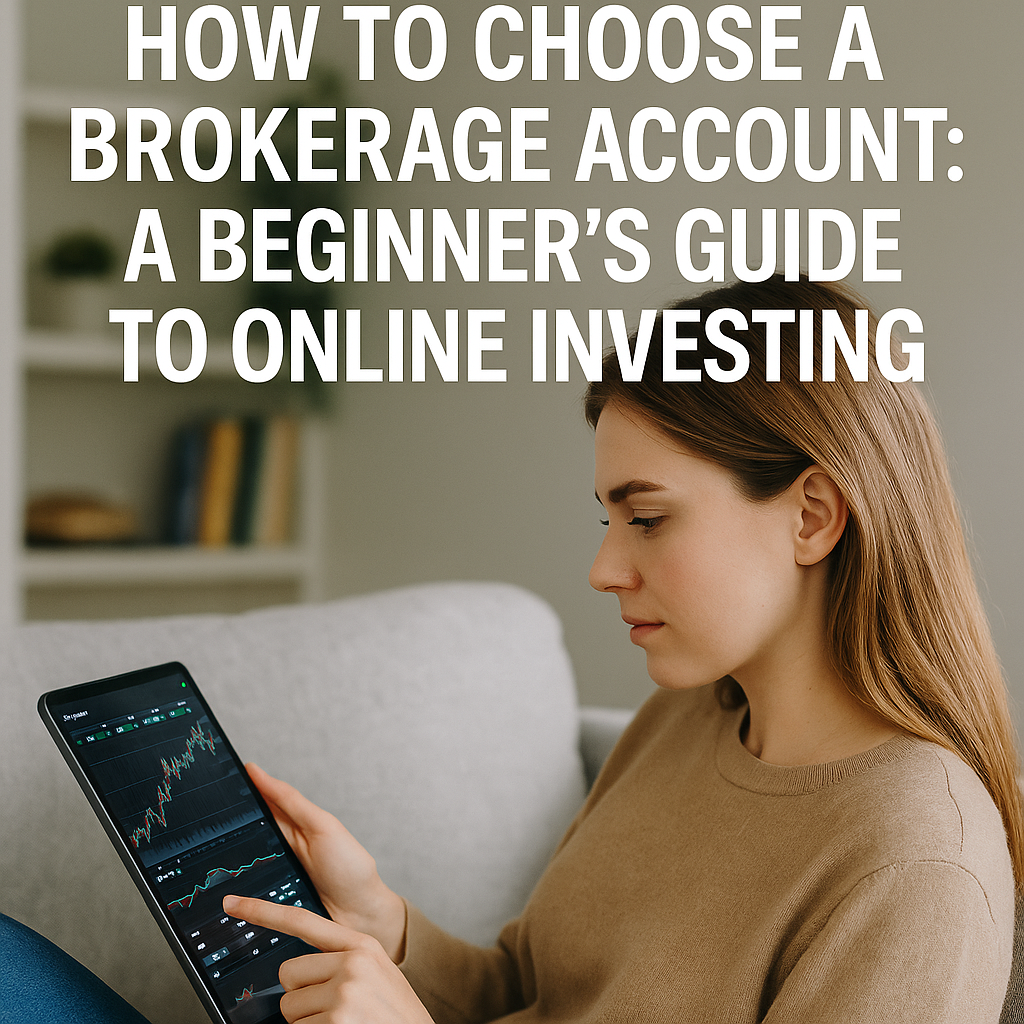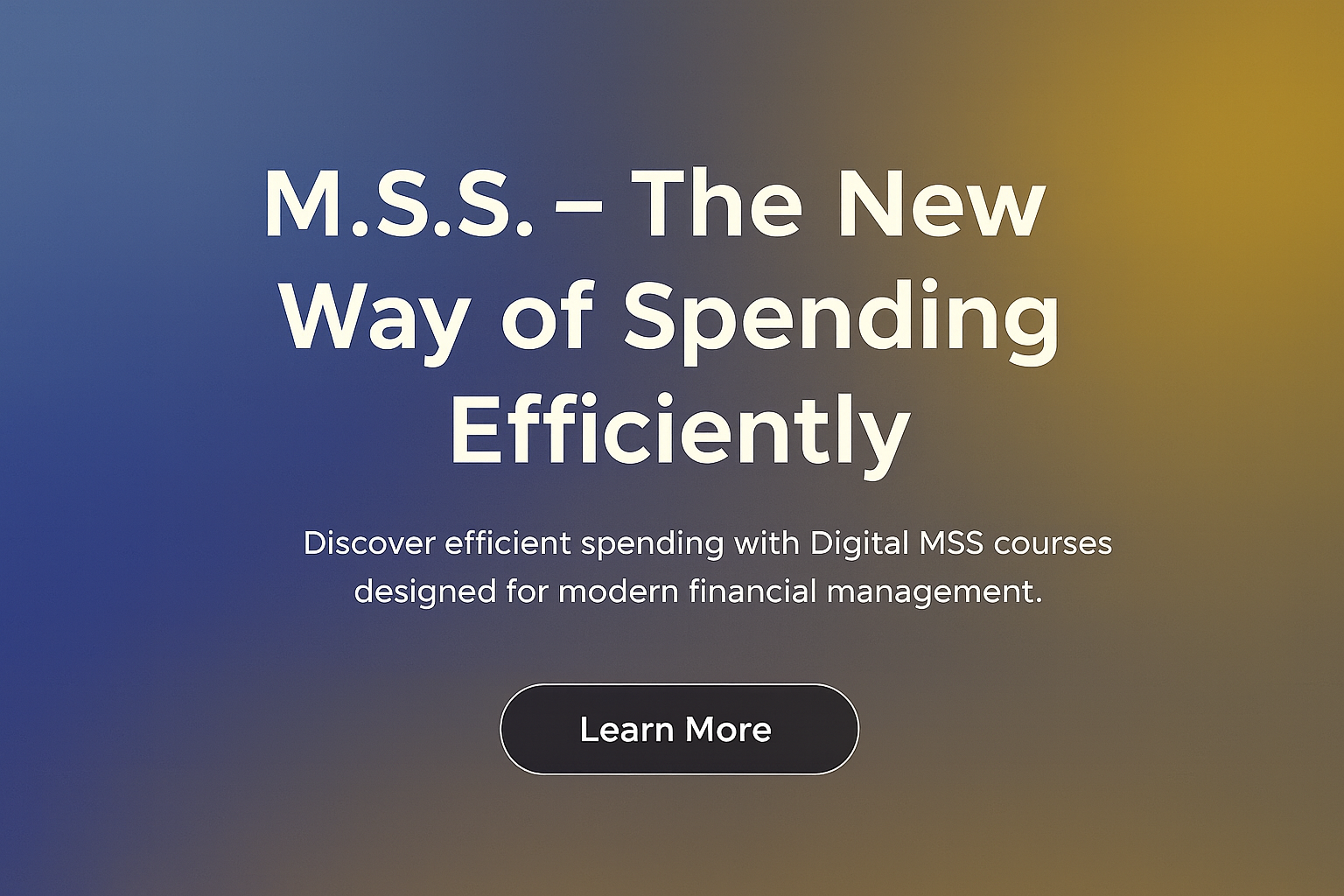How to Choose a Brokerage Account: A Beginner’s Guide to Online Investing
Online investing has become more accessible than ever, allowing beginners to trade stocks, ETFs, mutual funds, and other assets from the comfort of their homes. However, the first step to entering the world of investing is selecting the right brokerage account. With countless options available, from traditional firms like Fidelity to modern platforms like Robinhood, choosing a brokerage can feel overwhelming for newcomers. This beginner’s guide provides a step-by-step approach to help you choose a brokerage account that aligns with your financial goals, experience level, and investment preferences.
In this 4,000-word article, we’ll cover the key factors to consider, compare popular brokerage platforms, and offer practical tips to ensure you make an informed decision. Whether you’re planning to invest in stocks, diversify with ETFs, or explore options trading, the right brokerage account is your gateway to building wealth.
Why Choosing the Right Brokerage Account Matters
The Role of a Brokerage Account
A brokerage account is a financial account that allows you to buy, sell, and hold investments like stocks, bonds, ETFs, and mutual funds. It’s managed by a brokerage firm or platform that acts as an intermediary between you and the financial markets. For beginners, selecting the right brokerage is critical because it impacts trading costs, investment options, user experience, and access to educational resources.
Consequences of a Poor Choice
Choosing the wrong brokerage can lead to high fees, limited investment options, or a platform that’s too complex for your needs. For example, a beginner might sign up for a platform with advanced trading tools meant for professionals, resulting in confusion, or choose a low-cost broker with poor customer support, leading to frustration during market volatility.
Benefits of a Well-Chosen Brokerage
- Cost Savings: Low or no fees maximize your returns.
- Ease of Use: Intuitive platforms simplify trading for beginners.
- Access to Resources: Educational tools and research help you learn.
- Flexibility: Diverse investment options support your goals.
This guide will walk you through the process of choosing a brokerage account, ensuring you avoid common pitfalls and find a platform that suits your needs.
Step 1: Understand Your Investment Goals
Defining Your Objectives
Before comparing brokerage accounts, clarify your investment goals. Ask yourself:
- What are you investing for? Retirement, a home purchase, or passive income?
- What’s your risk tolerance? Are you comfortable with volatile assets like stocks, or do you prefer stable options like bonds?
- How active will you be? Will you trade frequently or invest for the long term?
- What’s your budget? How much capital are you starting with?
For example, a young investor saving for retirement might prioritize a brokerage with low-cost ETFs and a Roth IRA option, while a day trader might need a platform with real-time data and advanced charting tools.
Common Investment Goals
- Long-Term Wealth Building: Focus on stocks, ETFs, and index funds.
- Retirement Planning: Look for IRAs (Traditional or Roth) with tax advantages.
- Income Generation: Seek dividend stocks or bonds.
- Speculative Trading: Explore options, futures, or cryptocurrencies.
Using AI to Refine Goals
AI tools like ChatGPT can help clarify your objectives. Prompt ChatGPT with:
“Suggest investment goals for a 30-year-old beginner with $5,000 to invest.”
A sample response might include:
- Build a diversified portfolio with low-cost ETFs.
- Open a Roth IRA for tax-free retirement growth.
- Allocate 10% to high-growth stocks for risk exposure.
Documenting Your Goals
Create a simple table to outline your goals, budget, and preferred assets. For example:
| Goal | Time Horizon | Budget | Preferred Assets |
|---|---|---|---|
| Retirement Savings | 30 years | $3,000 | ETFs, Index Funds |
| Passive Income | 5 years | $2,000 | Dividend Stocks |
Reference Link
Learn more about setting investment goals from Investopedia’s guide.
Step 2: Compare Key Brokerage Features
Essential Factors to Evaluate
Not all brokerage accounts are created equal. Here are the key features to consider when comparing platforms:
1. Fees and Commissions
Fees can erode your returns, especially for beginners with small portfolios. Common fees include:
- Trading Commissions: Fees per trade (many brokers now offer $0 commissions for stocks and ETFs).
- Account Maintenance Fees: Annual or monthly fees for account management.
- Inactivity Fees: Charges for low trading activity.
- Other Fees: Withdrawal fees, transfer fees, or margin interest.
Example: Robinhood and Webull offer commission-free trading, ideal for cost-conscious beginners, while some traditional brokers like Charles Schwab may charge fees for certain transactions.
2. Investment Options
Ensure the brokerage supports the assets you want to trade:
- Stocks and ETFs
- Mutual Funds
- Bonds
- Options and Futures
- Cryptocurrencies
- International Markets
Example: Fidelity offers a wide range of mutual funds, while Interactive Brokers provides access to global markets, suitable for advanced investors.
3. Account Types
Different accounts serve different purposes:
- Taxable Brokerage Account: General investing with no tax benefits.
- Retirement Accounts: IRAs (Traditional, Roth) or 401(k) rollovers.
- Education Accounts: 529 plans for college savings.
- Managed Accounts: Robo-advisors for automated investing.
Example: Betterment’s robo-advisor is great for passive investors, while TD Ameritrade offers robust IRA options.
4. User Experience
A beginner-friendly platform should have:
- An intuitive interface for placing trades.
- Mobile and desktop apps for accessibility.
- Clear navigation for account management.
Example: Robinhood’s mobile-first design is ideal for beginners, while E*TRADE offers a more robust desktop platform.
5. Research and Tools
Access to research and tools helps you make informed decisions:
- Stock screeners to filter investments.
- Market news and analyst reports.
- Charting tools for technical analysis.
- Educational resources like webinars or articles.
Example: Charles Schwab provides extensive research from Morningstar, while TradingView (integrated by some brokers) offers advanced charting.
6. Customer Support
Reliable support is crucial during market disruptions or account issues:
- 24/7 phone or live chat support.
- Email or ticket-based assistance.
- In-person branches for traditional brokers.
Example: Fidelity excels in customer support, while newer platforms like Webull may rely on email or chat.
Comparing Popular Brokers
Here’s a comparison of five popular brokerage platforms for beginners:
| Broker | Fees | Investment Options | Account Types | Best For |
|---|---|---|---|---|
| Robinhood | $0 commissions | Stocks, ETFs, Crypto, Options | Taxable, Margin | Mobile-first beginners |
| Fidelity | $0 commissions | Stocks, ETFs, Funds, Bonds | Taxable, IRAs, 529 | Comprehensive services |
| Charles Schwab | $0 commissions | Stocks, ETFs, Funds, Options | Taxable, IRAs, Robo | Research and support |
| Webull | $0 commissions | Stocks, ETFs, Crypto, Options | Taxable, IRAs | Active traders |
| Betterment | 0.25% advisory fee | ETFs (robo-advisor) | Taxable, IRAs | Passive investors |
Reference Link
Compare brokerage fees at NerdWallet’s brokerage reviews.
Step 3: Assess Account Minimums and Funding
Understanding Minimums
Some brokerages require a minimum deposit to open an account, while others have no minimums. For beginners with limited capital, low or no minimums are ideal.
- No Minimum: Robinhood, Webull, Fidelity, Charles Schwab.
- Low Minimum: E*TRADE ($500 for some accounts).
- High Minimum: Traditional advisors or robo-advisors like Betterment ($10,000 for premium plans).
Funding Your Account
Once you choose a brokerage, you’ll need to fund your account. Common methods include:
- Bank Transfer: Link your bank account for ACH transfers (free, takes 1-3 days).
- Wire Transfer: Faster but may incur fees.
- Rollover: Transfer funds from an existing IRA or 401(k).
Tip: Start with a small amount (e.g., $100) to test the platform before committing more capital.
Example
A beginner with $500 to invest might choose Robinhood for its $0 minimum and commission-free trading, funding the account via ACH transfer to avoid fees.
Step 4: Explore Educational Resources and Tools
Why Education Matters
As a beginner, you’ll need resources to learn about investing strategies, market trends, and portfolio management. Many brokerages offer:
- Articles and Videos: Basics of stock trading, diversification, and risk management.
- Webinars: Live sessions on technical analysis or retirement planning.
- Simulators: Paper trading to practice without risking money.
Broker-Specific Resources
- Fidelity: Offers a Learning Center with courses on investing basics.
- Charles Schwab: Provides Schwab Insights for market analysis.
- TD Ameritrade: Features thinkorswim with tutorials and paper trading.
- Robinhood: Includes “Robinhood Learn” for bite-sized lessons.
Using AI for Learning
AI tools can supplement brokerage resources. Prompt ChatGPT with:
“Explain the basics of diversification for a beginner investor.”
A sample response might include:
- Diversification reduces risk by spreading investments across asset classes.
- Example: Allocate 60% to stocks, 30% to bonds, 10% to cash.
- Use ETFs for instant diversification.
Reference Link
Access free investing courses at Coursera.
Step 5: Evaluate Security and Regulation
Ensuring Your Money Is Safe
Security is paramount when choosing a brokerage. Verify that the platform is:
- Regulated: Registered with the SEC and FINRA (in the U.S.).
- Insured: Protected by SIPC (up to $500,000 per account in case of brokerage failure).
- Secure: Uses two-factor authentication (2FA) and encryption.
Red Flags to Avoid
- Unregulated brokers or offshore platforms.
- Lack of transparency about fees or policies.
- Poor reviews regarding account security or withdrawals.
Example
Fidelity and Charles Schwab are SIPC-insured and FINRA-regulated, offering robust security features like 2FA and biometric login, making them safe choices for beginners.
Reference Link
Learn about SIPC protection at SIPC.org.
Step 6: Test the Platform with a Demo Account
Benefits of Paper Trading
Many brokerages offer demo or paper trading accounts, allowing you to test the platform without risking real money. This helps you:
- Familiarize yourself with the interface.
- Practice placing trades.
- Test investment strategies.
Brokers with Demo Accounts
- TD Ameritrade: thinkorswim offers paperMoney for simulated trading.
- Webull: Provides a paper trading feature for stocks and options.
- Interactive Brokers: Offers a demo account for global markets.
How to Use a Demo Account
- Sign up for the demo account (usually free).
- Practice trading with virtual funds (e.g., $10,000).
- Test features like stock screeners, charts, or watchlists.
- Evaluate whether the platform meets your needs.
Example
A beginner might use Webull’s paper trading to practice buying ETFs based on a screener, gaining confidence before funding a real account.
Step 7: Open and Fund Your Account
Steps to Open an Account
- Choose Your Broker: Based on your research, select a platform (e.g., Fidelity for comprehensive services).
- Complete the Application:
- Provide personal details (name, address, SSN).
- Specify account type (taxable, IRA, etc.).
- Answer questions about your investment experience.
- Verify Identity: Upload a government-issued ID or verify via email/phone.
- Fund the Account: Link a bank account and transfer funds.
Tips for Beginners
- Start with a small deposit to minimize risk.
- Review the brokerage’s terms and conditions.
- Set up 2FA for added security.
Example
A beginner opens a taxable account with Robinhood, funds it with $200 via ACH transfer, and buys a low-cost ETF to start investing.
Step 8: Monitor and Reassess Your Choice
Ongoing Evaluation
Your needs may evolve as you gain experience. Periodically reassess your brokerage to ensure it aligns with your goals. Consider:
- Performance: Are fees impacting your returns?
- Features: Do you need more advanced tools or new asset classes?
- Support: Is customer service meeting your expectations?
When to Switch Brokers
- High fees erode returns.
- Limited investment options restrict your strategy.
- Poor platform performance or outages.
Transferring Accounts
Most brokers allow you to transfer accounts without selling assets (ACAT transfer). Check for transfer fees (some brokers reimburse them).
Reference Link
Learn about transferring accounts at FINRA’s guide.
Conclusion
Choosing a brokerage account is a pivotal step for beginner investors. By understanding your goals, comparing fees, investment options, and platform features, evaluating security, and testing with demo accounts, you can select a brokerage that supports your financial journey. Platforms like Robinhood, Fidelity, and Charles Schwab offer beginner-friendly options, while tools like paper trading and AI-driven insights can enhance your learning.
Start small, leverage educational resources, and periodically reassess your choice to ensure it meets your evolving needs. With the right brokerage account, you’ll be well-equipped to build wealth through online investing.
Disclaimer
The information provided in this article is for educational purposes only and does not constitute financial advice. Investing involves significant risks, including the potential loss of capital. Always conduct your own research and consult a qualified financial advisor before making investment decisions. The author and publisher are not responsible for any losses incurred from using the information in this article.








